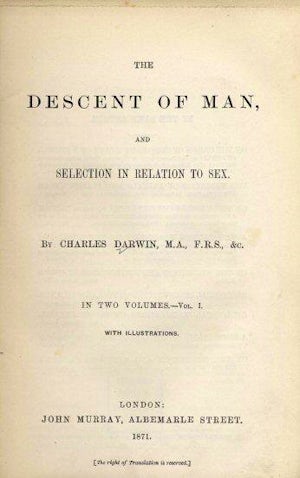February 20, 1866. Gregor Mendel, an Augustinian monk, publishes his paper, “Versuche über Pflanzenhybriden” (“Experiments on Plant Hybridization”), containing his findings on heredity in the journal Proceedings of the Natural History Society of Brunn. These findings, which demonstrate that inheritance follows particular laws, emerged from years of observations breeding pea plants at the experimental garden of the Augustinian Abbey of St. Thomas in Brno (Eugenics Archive, n.d.). Mendel’s work show that certain traits are dominant or recessive and how the combination thereof produces observable variations to characteristics such as flower colour or the texture of a seed (Eugenics Archive, n.d.). His work also showed that traits were discrete bits of hereditary information that could be passed on through generations, even if they didn't appear in all offspring. These bits of information were called "genes" (Eugenics Archive, n.d.).
His work went largely unremarked for 35 years following publication, until it was independently duplicated by Hugo de Vries and Carl Correns in the 1890s (Eugenics Archive, n.d.). Mendel’s laws are often reduced to the general statement “like begets like,” which became a frequent justification for eugenic practices, and specifically Mendelian Heredity (Eugenics Archive, n.d.).
When Mendelian genetics re-emerged, it was applied to explain human genetics. The most frequently used example was eye colour, as Charles and Gertrude Davenport popularized. This example is still used to describe human heredity, although it is now believed that eye colour is more complex (Eugenics Archive, n.d.). However, through this logic and by carefully controlling human “breeding”, eugenicists thought that mental retardation, psychiatric illness, and physical disability could be eradicated (Norrgard, 2008). Canada, the United States, and Britain were all large supporters of Mendelian-based eugenics.
Mendelians felt that human heredity was unaffected by environment, but instead was solely affected by genetics. Eugenic support from this camp therefore tended more towards active eugenics, or negative eugenics – actively removing those with “undesired” characteristics from the population, or encouraging “undesirables” not to procreate.
Another branch of thought on eugenics also existed in the early 20th century, that of Neo-Lamarckian eugenics. Neo-Lamarckian genetics proposed that environment also informed genetics. It led to the idea that reforming environmental or social milieus could improve “bad blood”, and as a result, Neo-Lamarckians tended to support more positive eugenics (Schayegh, 2004). This theory was popular in France, Latin America, and Iran (Schayegh, 2004 ; Rosental, 2012). Neo-Lamarckian genetics lost popularity to Mendelian genetics for the most part, over the course of the 1940s.
-Colette Leung and Erna Kurbegovic
Eugenics Archive. (n.d.). Mendelian Heredity. Retrieved from http://www.eugenicsarchive.org/html/eugenics/static/themes/15.html
Schayegh, C. (2004). Hygiene, Eugenics, Genetics, and the Perception of Demographic Crisis in Iran, 1910s-1940s. Critique: Critical Middle Eastern Studies, 13(3), 335-361. doi: 10.1080/1066992042000300684
Rosental, P. A. (2012). Eugenics and Social Security in France before and after the Vichy Regime. Journal Of Modern European History, 10(4), 540.562.
Norrgard, K. (2008) Human testing, the eugenics movement, and IRBs. Nature Education 1(1):170
 1869:
Galton publishes Hereditary Genius
1869:
Galton publishes Hereditary Genius
 1871:
Charles Darwin publishes The Descent of Man
1871:
Charles Darwin publishes The Descent of Man